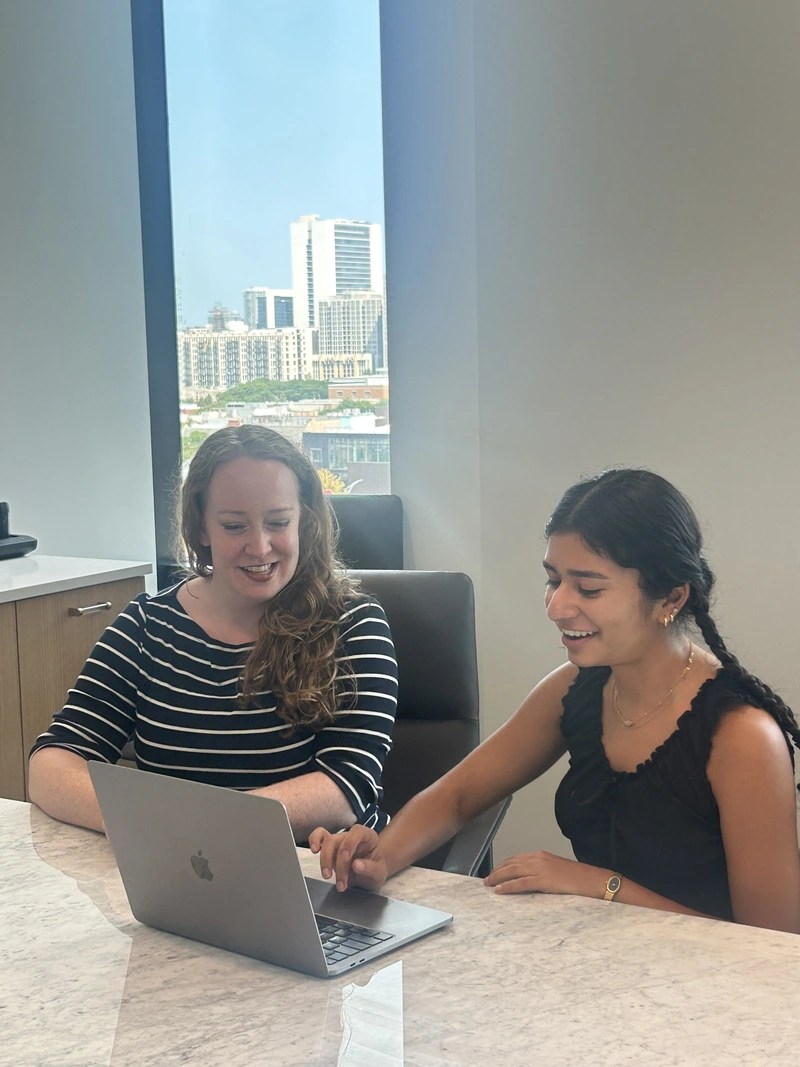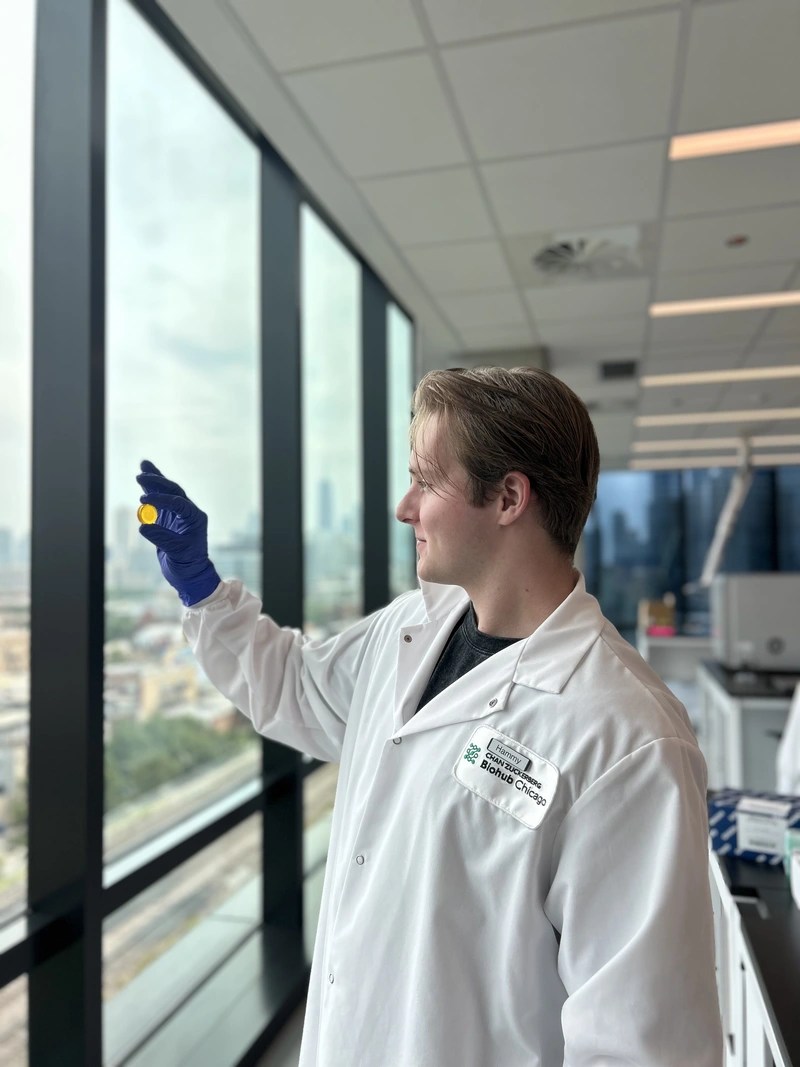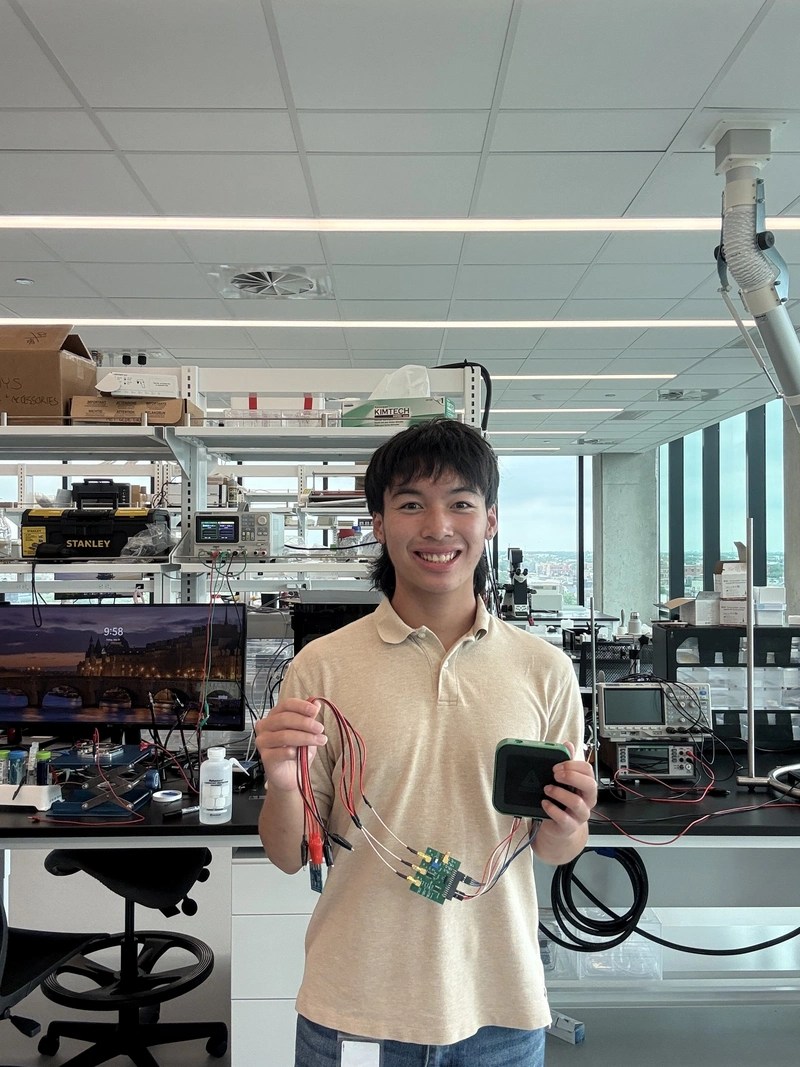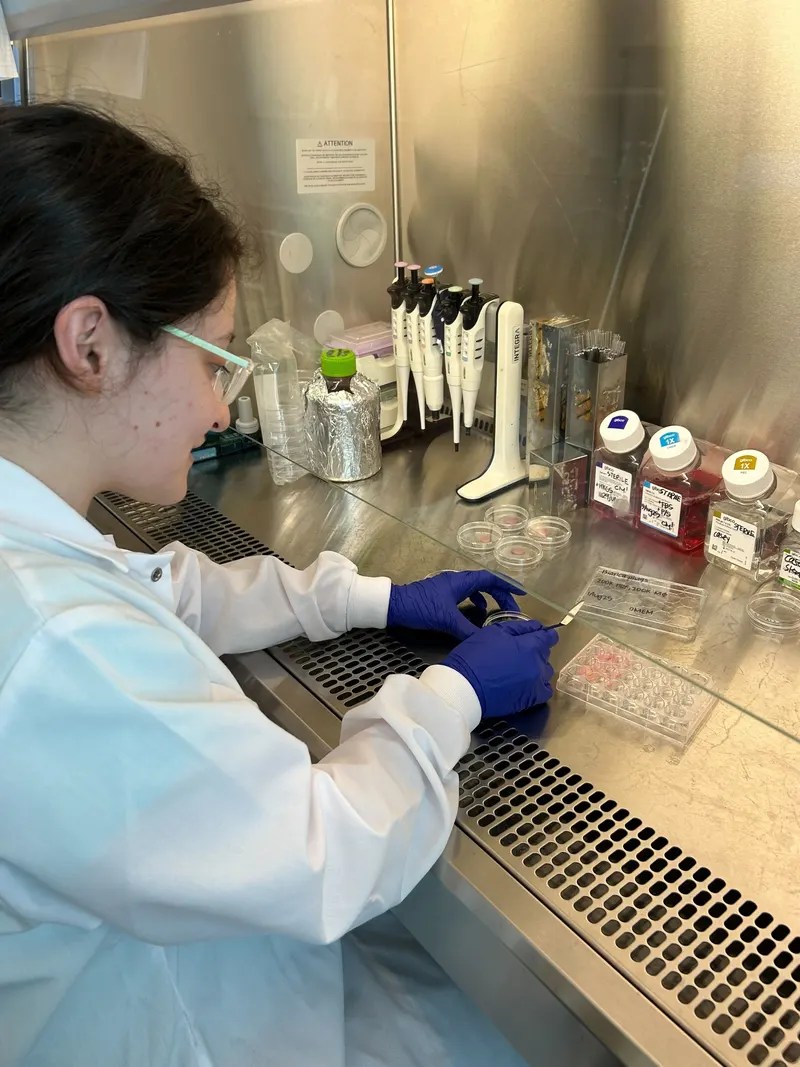Riddle of the sphinx
Probing the sphinx tile to explore geometry and chirality in life
Twelve interns have joined research labs at CZ Biohub Chicago for the summer. The interns, undergraduate and graduate students, are fully integrated into some of the Biohub’s most groundbreaking research, bringing fresh perspectives to their groups’ work.
The San Francisco Biohub has hosted summer interns for years, and CZ Biohub New York welcomed its first cohort of interns this year through the Life Sci NYC internship, a partnership with the Education Development Center. This year is the Chicago Biohub’s first time running its own independent internship program.
Throughout the summer, the program has provided opportunities for networking and professional development. And in the lab, interns have done substantive work, advancing both their scientific careers and the Biohub’s goals.
Many of the scientists mentoring interns this summer see it as an opportunity to “pay it forward.” “My research journey up to this point has been characterized by a lot of great teachers and mentors,” says Claire Liu, a Chicago Biohub research scientist and a mentor to a summer intern. “We thought it would be really cool this summer to be able to share that with the next generation.”
Each intern is working on a project that contributes to the Chicago Biohub’s grand challenge: to create new tools for sensing and directly measuring inflammation within tissues in real time.
Meet four of this year’s interns, and learn more about the projects they’re working on.

When biologists want to learn which genes affect a cellular function, they often perform a CRISPR screen — a technique that uses gene editing technology to assess how cells react to the deletion or upregulation of various genes. The technique is effective, but also expensive and time-consuming.
That’s why intern Anushka Agrawal, a rising fourth-year undergraduate student at the University of Chicago, is working with Jason Perera, senior manager for AI/ML, on a tool called Virtual CRISPR. The tool can predict the results of experimental CRISPR screens, which could save time and money for scientists, reserving “real” screens for validation of interesting Virtual CRISPR predictions. Agrawal is helping to get the program running, and integrating it into an easy-to-use web interface.
For Agrawal, being in the AI/ML group has made her more confident in her career goal to work at the intersection of biology and technology. “It’s nice to see how grounded in biology the AI/ML team is here,” she says.

Inflammation is a component of countless diseases. Understanding it better, and monitoring it over time, can give scientists clues into how disease works and how to fight it.
That’s what intern Andrew “Hammy” Hamilton, a rising senior at the University of Illinois Urbana-Champaign, is working on with the Biohub’s Spatiotemporal Omics team, alongside research scientist Liu.
That team aims to make precise measurements of the molecules involved in skin inflammation over both space and time. Hamilton has been involved with every part of his project’s workflow, an experience that can be hard to come by for undergraduates interested in research careers. He fits mice with skin patches that capture small molecules, and then analyzes the chemical composition of the samples using a state-of-the-art mass spectrometer.
“It’s really interesting to understand what makes our skin,” Hamilton says. He’s enjoyed feeling like he’s at the forefront of research, applying his interests in medicine and analytical chemistry to trailblazing science.

To measure inflammation over time, scientists must design technology that can interface with human tissue. As part of Chicago’s Biomimetronics group, intern Eric Lai is helping create new tools that can do just that.
Biohub scientists have designed sensors that can measure skin inflammation by translating the presence of biomarkers, small molecules that indicate inflammation, into electrical currents. To interpret these data, scientists typically use a bulky, expensive instrument called a potentiostat.
Lai, a rising second-year undergraduate student at the University of California, Irvine, is working with Biomimetronics group leader Csaba Forró to design a printed circuit board version of a potentiostat — a smaller, less expensive device than a full-blown potentiostat, but with the same ability to interpret the sensors’ data.
Working at the Biohub has been Lai’s first research experience. But, he says, it’s encouraged him to continue seeking out research opportunities when he returns to his university. “I’ve really been enjoying how much creative and technical freedom I’ve been given,” he says.

To get a detailed understanding of inflammation, biologists need a high-quality model of human skin tissue that they can study in the lab. Intern Bianca Dwork, a rising third-year undergraduate student at the University of Chicago, is working with the Tissue Models group this summer to help develop these models.
Dwork’s work this summer involves adding immune cells, called macrophages, into a mixture of cells that represents human skin. She treats the cells with a cocktail of chemicals that induce inflammation and observes how the presence or absence of macrophages changes the model’s response.
Eventually, the Tissue Models group hopes to create an in vitro model of psoriasis, an autoimmune skin condition in which inflammation can cause “flare-ups” — patches of dry, itchy skin. Group leader Quinn Roth-Carter calls the model “flare in a dish.”
Dwork has worked in academic research settings before but was struck by the differences at the Biohub. She says that her project in tissue engineering is a way to apply the basic science techniques she’s familiar with, and she’s enjoyed working among scientists with diverse backgrounds. “The main thing I’ve learned,” she says, “is that there are way more paths in science than I thought.”
Probing the sphinx tile to explore geometry and chirality in life
Learn More
Explore stories of people who have recovered from COVID-19 and how they are helping researchers better understand how this virus will impact our communities...
Learn More
The Neurodegeneration Challenge Network brings researchers, scientists, engineers and clinicians together to better understand causes of neurodegenerative...
Learn More
Stay up-to-date on the latest news, publications, competitions, and stories from CZ Biohub.
Cookies and JavaScript are required to access this form.